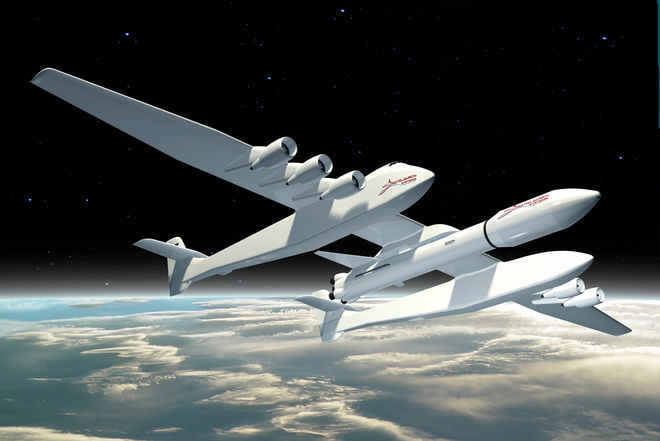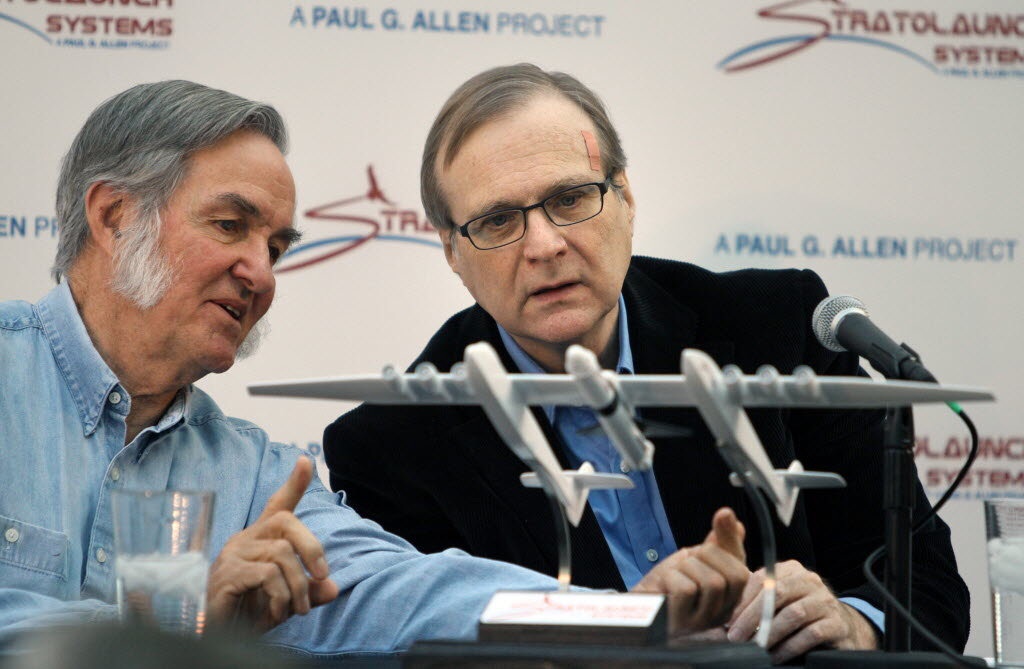Stratolaunch Systems, a space launch company funded by Microsoft co-founder Paul Allen, has announced its intention to begin launching satellites into orbit from the world's biggest airplane.

With a wingspan of 117m, the six-engine plane will be larger than Howard Hughes' 1947 H-4 Hercules
Stratolaunch Systems is a unit of Allen's privately owned Vulcan Aerospace and last week gave a small group of reporters a first look at the nearly finished aircraft.

With a wingspan of 117m, the six-engine plane will be larger than Howard Hughes' 1947 H-4 Hercules, known as the ‘Spruce Goose’, and the Antonov An-225, a Soviet-era cargo plane originally built to transport the Buran space shuttle, which is currently the world's largest aircraft.
Allen's move coincides with a surge of new businesses planning to sell Internet access, Earth imagery, climate data and other services from networks of hundreds of satellites in low-altitude orbits around Earth.
Allen's vision for building commercial highways to space differs from that of Elon Musk's SpaceX, Jeff Bezos' Blue Origin, Richard Branson's Virgin Galactic and other similar companies.
Musk's goal is to fly people to Mars. Bezos is developing low-cost, reusable rockets with the goal of moving energy-intensive, heavy industry off Earth. Branson is focused on space tourism and a small satellite launcher.
The advantage of Allen's approach will be the ability to position the plane so satellites can be directly delivered into very precise orbits and do so quickly, without launch range scheduling issues and weather-related delays.
The Stratolaunch plane looks nothing like its behemoth predecessor aircraft. Rather than transporting heavy cargo inside a main body section, Stratolaunch is a twin-fuselage craft that incorporates engines, landing gear, avionics and other parts from a pair of Boeing 747 jets coupled with a frame, wings and skin handmade of lightweight composites.
The plane is similar in form and function to Scaled's aircraft built to ferry spaceships into the air and release them for independent rocket rides beyond the atmosphere, a service Richard Branson's Virgin Galactic intends to offer to paying passengers.
Stratolaunch plans a similar service for satellites, particularly the low-Earth orbiting multi-hundred member constellations under development by companies including SpaceX and Google's Terra Bella to provide internet access, Earth imagery and other data. Stratolaunch will offer quick and precise satellite positioning, a service that will set it apart from competitors.
These satellite networks, based on low-cost spacecraft, are the fastest-growing segment of the global satellite industry which reported more than $208bn (£142bn) in revenue 2015, according to a Satellite Industry Association report.
Assembly of the plane is 76 per cent complete, with the engines, landing gear and one tail section still to be installed. The plane is expected to be finished before the end of the year with commercial services launching before 2020.
The plane is designed to carry a rocket and payload with a combined weight of up to 250,000kg, on par with what a SpaceX Falcon 9 rocket can launch from the ground.
Competition in the sector is heating up with SpaceX successfully launching its first satellite and landing a rocket on a barge in the middle of the ocean, and Blue Origin achieving similar feats.
